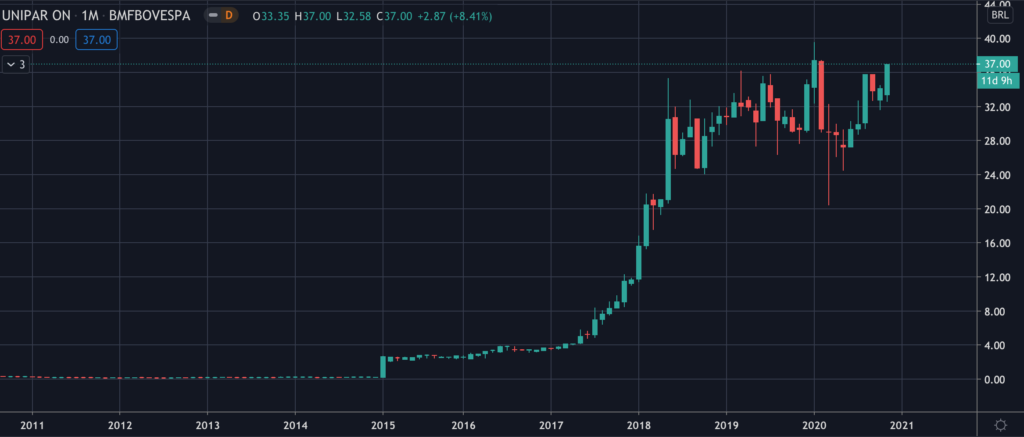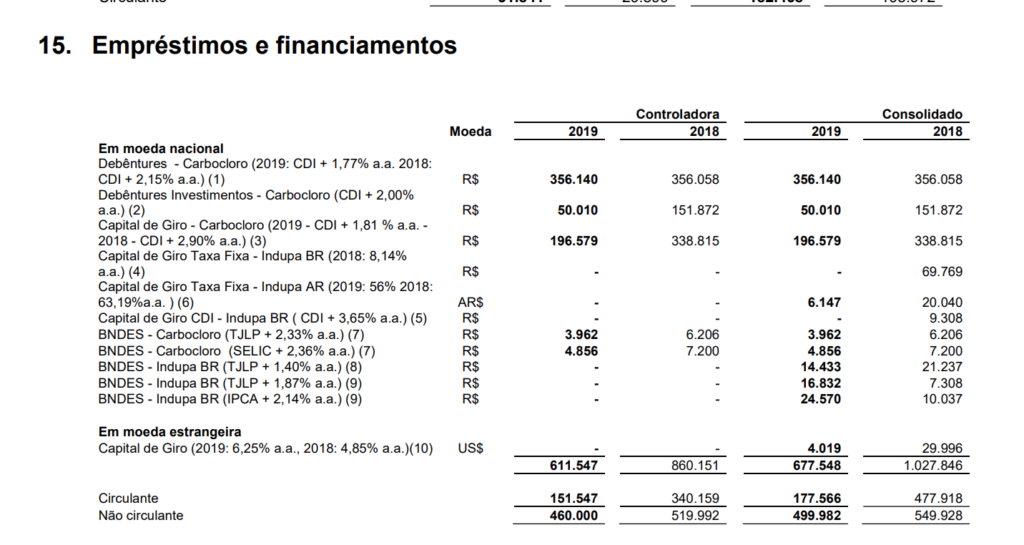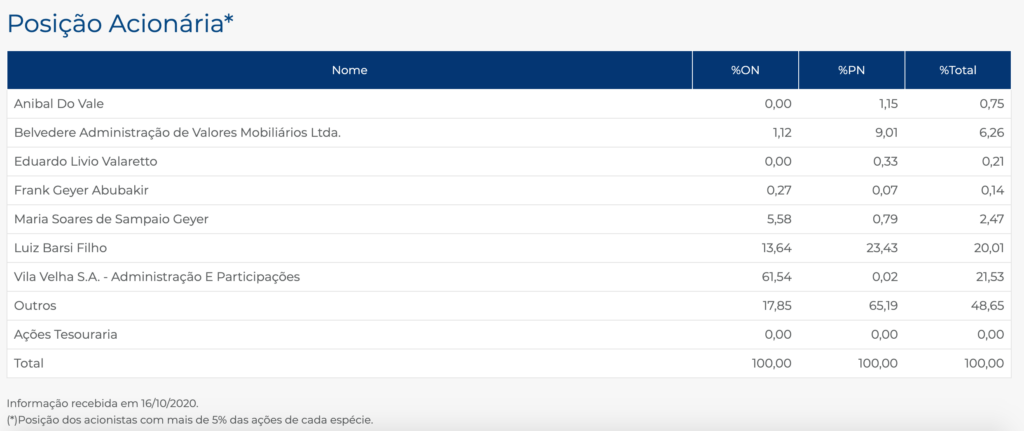Common Stock: Unipar (UNIP3)
Current Market Price: R$ 37
Market Capitalization: R$ 3.4 billion
*All values in this article are expressed in Brazilian Reais (BRL) unless otherwise noted.
**The bulk of this analysis is based on the company’s most recent audited financial report, which can be found by following this link.

Unipar Stock – Summary of the Company
Unipar is a Brazilian manufacturing company focused on the production and sale of chlorine, chlorine derivatives and caustic soda. They have two factories, one in Brazil and the other in Argentina. Unipar was founded in 1969 and is headquartered in Sao Paulo, Brazil. The company employees around 1000 people.
Revenue and Cost Analysis
Unipar had revenue of R$ 3 billion in 2019, a significant decrease from R$ 3.4 billion in 2018. Their COGS in 2019 was R$ 2.2 billion, representing a gross margin of 27%, also a significant decrease compared to 36% in 2018. The company does have a small amount of revenue from exports, but the majority of their business is domestic.
Despite declining revenues, Unipar was profitable in 2019 and 2018. The company had net income of R$ 172.3 million in 2019, representing profit margin of 5.6%, a large decrease compared to 15.7% in 2018.
Balance Sheet Analysis
Unipar has a decent, but leveraged balance sheet. The have sufficient liquidity and a solid base of assets, but they have high liability levels, including debt.
Unipar – Debt Analysis
As of year-end 2019 Unipar has total debt outstanding of R$ 677.5 million, R$ 177.5 million of which is classified as current.

Unipar Stock – Share Dynamics and Capital Structure
As of June 2020 Unipar has 33 million common shares outstanding and 61.4 million preferred shares outstanding. Total shares outstanding is around 94.4 million shares. Insiders and institutional investors own around 51% of the company, with the remaining 49% being held by smaller shareholders with an ownership position of less than 5%.

Unipar Stock – Dividends
Based on 2019’s results Unipar paid a dividend of R$ 0.39 cents per common share. At the current market price this implies a dividend yield of 1.1%.
Unipar Stock – 3 Metrics to Consider
Debt to Equity Ratio
Total Liabilities/Total Share Holder Equity
R$ 2.2 billion / R$ 1.5 billion = 1.5
A debt to equity ratio of 1.5 indicates that Unipar uses a mix of debt and equity in its capital structure, but is leveraged, and relies more heavily on debt financing to fund itself.
Working Capital Ratio
Current Assets/Current Liabilities
R$ 1.2 billion / R$ 785 million = 1.5
A working capital ratio of 1.5 indicates a sufficient liquidity position. Unipar should not have a problem meeting its near term obligations.
Price to Book Ratio
Current Share Price/Book Value per Share.
R$ 37 / R$ 15.70 = 2.4
Based on total shares outstanding Unipar has a book value per share of R$ 15.70. At the current market price this implies a price to book ratio of 2.4, meaning Unipar stock currently trades at a premium to the book value of the company.
Unipar Stock – Summary and Conclusions
Unipar is a decent company, but I don’t see anything exceptional about it that would compel me to invest. Revenues and margins are declining, their balance sheet is leveraged, and the valuation is not cheap in my opinion. If I were to allocate to a Brazilian manufacturing company, I would rank other companies, such as Marcopolo, ahead of Unipar.
Disclaimer
This is not investment advice. Nothing in this analysis should be construed as a recommendation to buy, sell, or otherwise take action related to the security discussed. If I own a position in the security discussed, I will clearly state it.
This is not intended to be a comprehensive analysis and you should not make an investment decision based solely on the information in this analysis. I hope this serves as a useful starting point for a more comprehensive analysis, and hopefully draws attention to aspects of the company that were overlooked or merit further investigation. This is by no means intended to be a complete analysis. Again, this is not investment advice, do your own research.